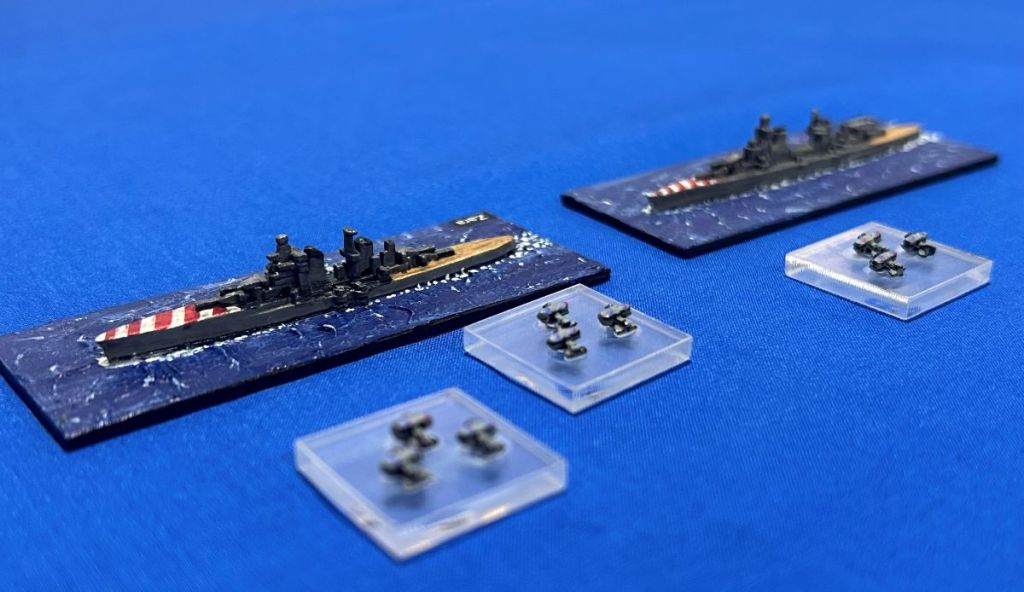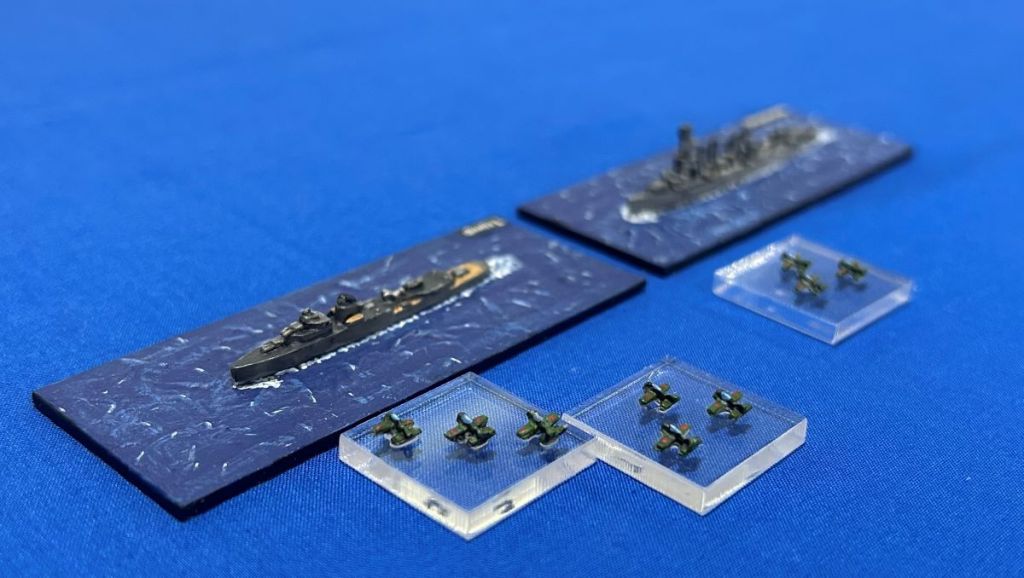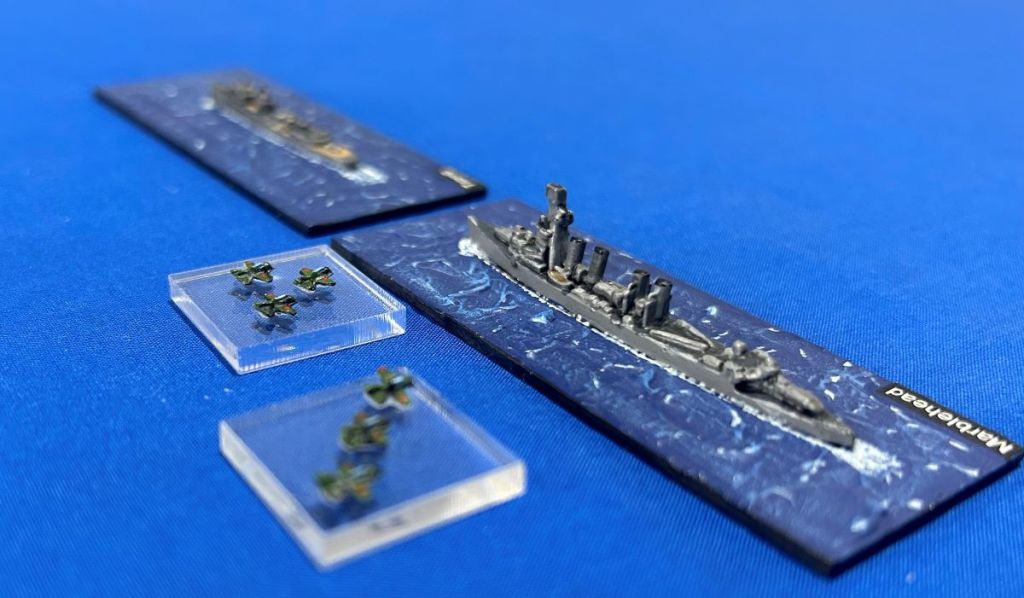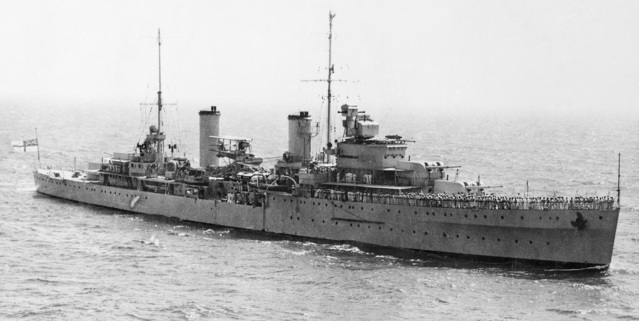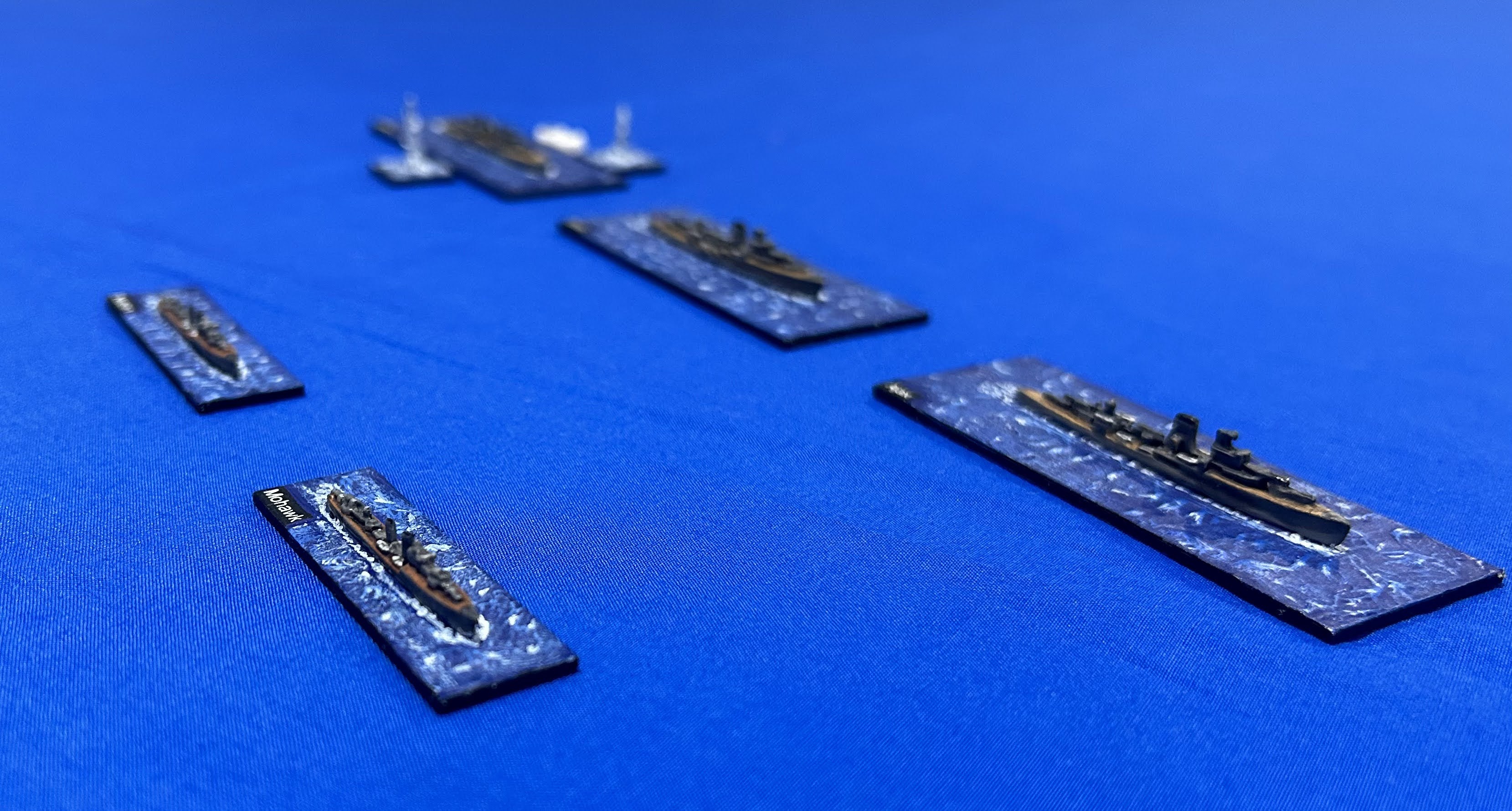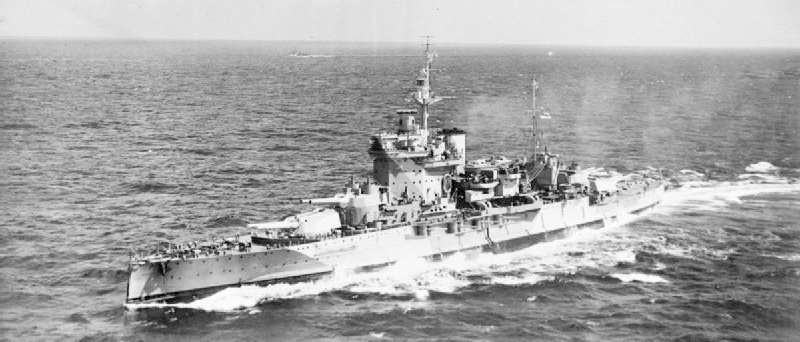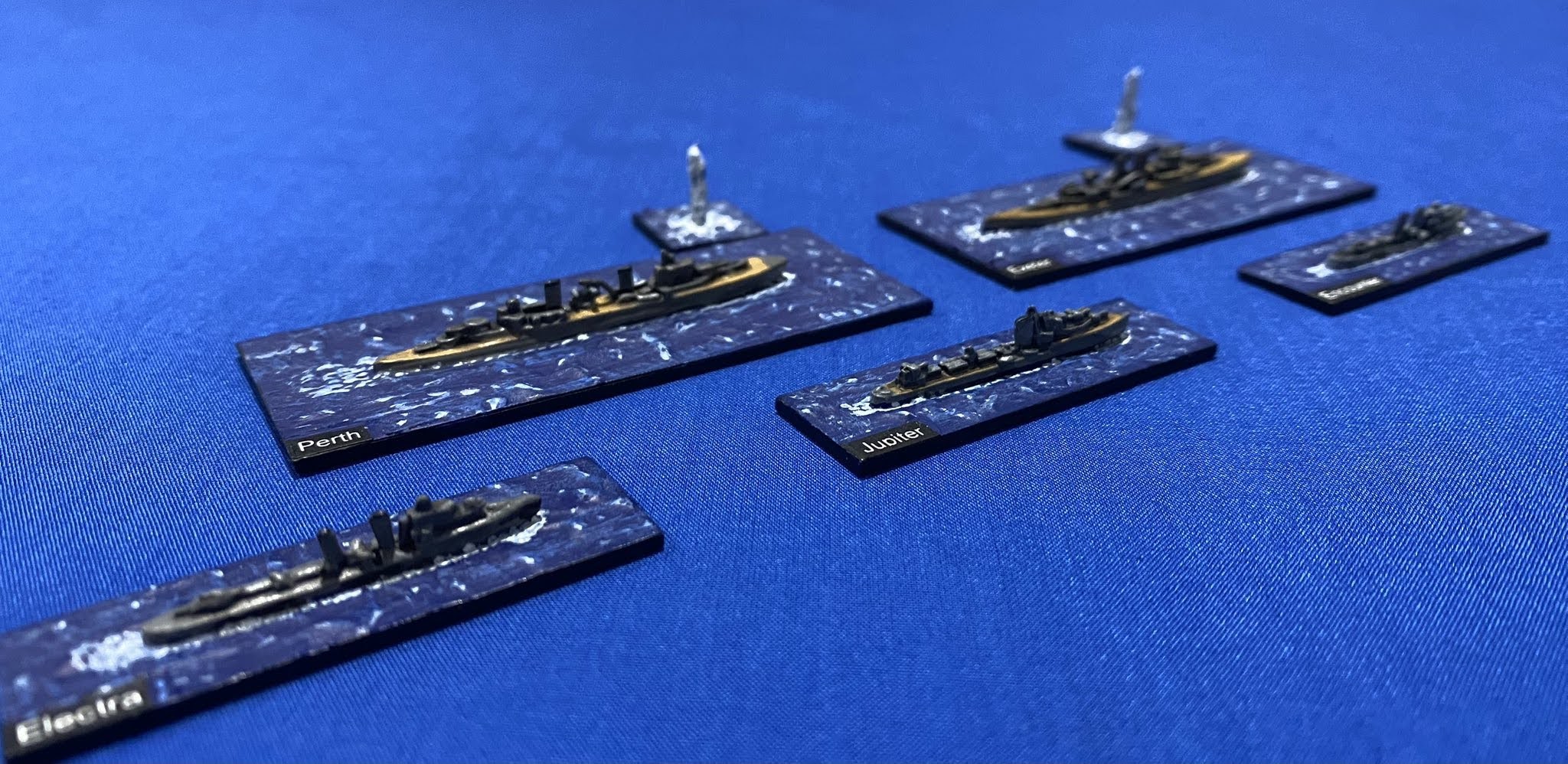This week a short report of a recent fictional WWII naval encounter set in the Far East in early February 1942. I have found the history of naval campaign in the Dutch East Indies fascinating so creating some of the situations on the table is a logical extension. Historically out-gunned but determined allied forces under took a series of naval actions against the Japanese invasion forces. Most actions occurred at night but some occurred in daylight. Our game attempts to capture one such situation in early February which historically resulted in the Battle of Makassar Strait where an allied strike force attempted to disrupt a Japanese invasion convoy.
In the historical action the Allied forces, comprising four cruisers and seven destroyers, were subjected to a series of high level aerial attacks from some 60 Japanese aircraft, a mix of “Nell” and “Betty” level bombers. The attacks resulted in damage to USS Houston and USS Marblehead and forced the the strike force to retire.
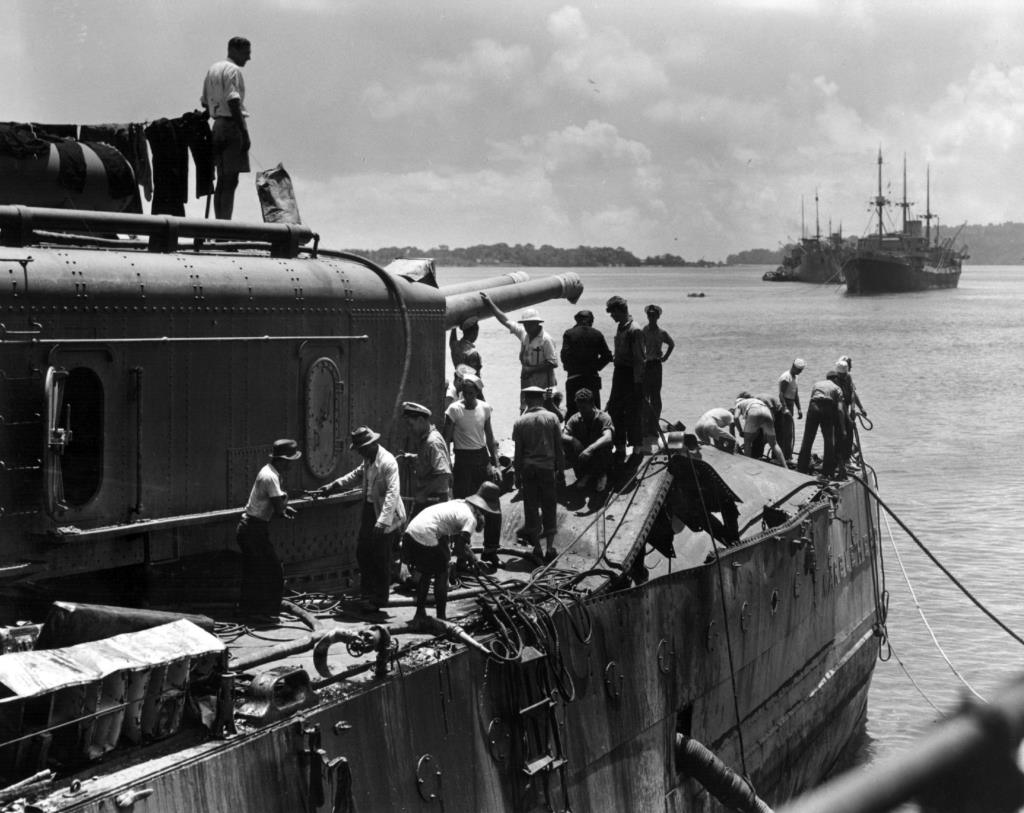
The success of the Japanese level bombing seems to be in part the result of allied tactics, which required the ships to operate independently rather than be “closed-up”. In the case of of USS Houston she was further compromised by defective 5″ anti-aircraft ammunition. In the end USS Houston suffered the loss of her aft 8″ gun turret, a significant result and one that would limit her in the subsequent Battle of Java Sea. USS Marblehead suffered even more extensive damage and which forced her out of the campaign.
Our scenario assumes the air attacks are less effective and the strike force pressed on only to be engaged by Japanese surface forces covering the invasion convoy.
In the historical action the cruisers comprised the previously mentioned USS Houston and USS Marblehead but were supplemented by the Dutch light cruiser HNLMS De Ruyter and the very small cruiser HNLMS Tromp. For our fictional encounter these have been reinforced by one additional heavy cruiser, HMS Exeter. Her addition provides a significant reinforcement to the Allied forces. Finally, some of the destroyers have been replaced with others of the same class, simply for convenience.
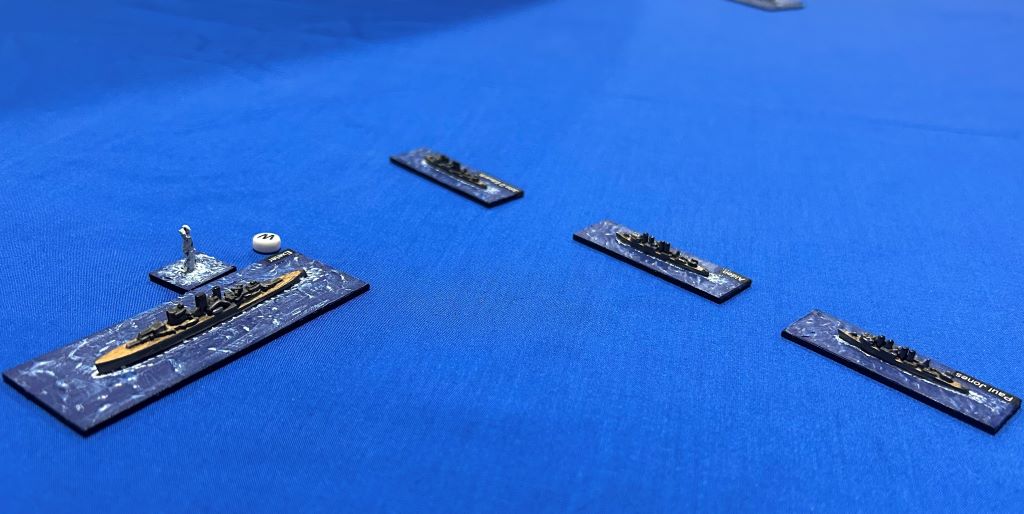
These destroyers are all elderly Clemson class vessels which do have a strong torpedo armament, though they are not positioned on the centreline and thus complicate their use. Unfortunately US forces at this time also suffered from defective torpedoes, which would further limit US destroyer capabilities in our game.
Historically of course Japanese surface forces were not engaged at Makassar Strait. However, for our purposes a selection of vessels operating in the Dutch East Indies provided a scratch force to engage the reinforced Allies. This included the powerful heavy cruiser Haguro, two light cruisers and five Japanese destroyers. A short report of the Battle of the Kangean Islands can be found here.

